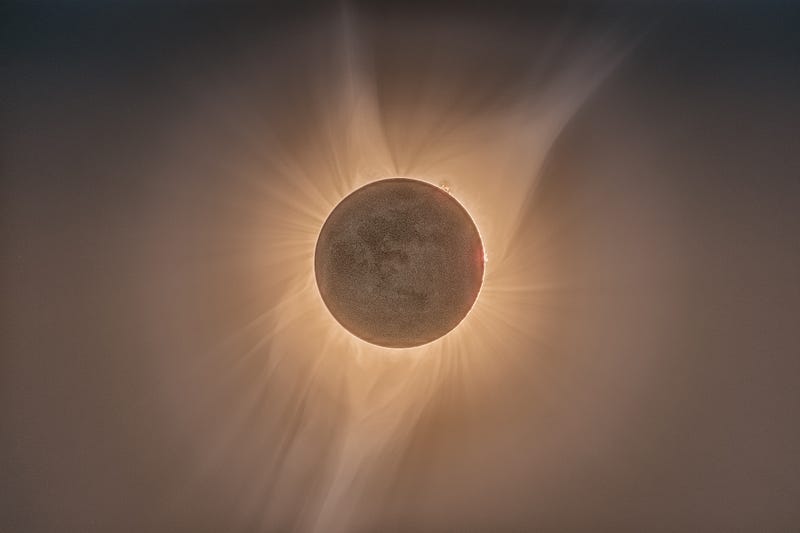The Cataclysmic Birth of the Moon: A New Perspective
Written on
Chapter 1: The Formation of the Moon
The creation of the Moon is believed to have stemmed from a moment of immense catastrophe. A small celestial body, comparable in size to Mars, collided with the primitive Earth. This violent impact shattered both planets and sent a massive cloud of molten debris spiraling into space. Over time, this debris is thought to have coalesced into the Earth and Moon that we recognize today.
A recent simulation of this cataclysmic event indicates that the Moon may have formed in a remarkably short time frame, potentially within just a few hours following the impact. According to this model, the early Earth was struck by a glancing blow, resulting in the fragmentation of the planet and the ejection of two large masses of debris.
One of these masses quickly fell back to Earth, merging with it. However, the second mass survived the collision and entered into orbit around our planet. Gradually, this mass cooled and solidified, eventually becoming the Moon we observe today.
Older theories proposed a different sequence of events. They often suggested that the second planet, commonly referred to as Theia, shattered upon impact, with most of its remnants entering orbit and gradually coalescing to form the Moon over a span of months or years.
However, if this was indeed the case, it would imply that the Moon and Earth comprise different materials, with the Moon predominantly formed from Theia rather than Earth.
Contradictory evidence has emerged from studies of lunar rocks, which indicate that both the Earth and Moon share remarkably similar compositions, likely deriving from a blend of materials from both the early Earth and Theia. Several lingering questions remain, particularly regarding the Moon's tilted orbit and its thin crust, both of which are difficult to reconcile with previous theories.
The new model offers a coherent explanation for these challenges. It suggests that Earth and Theia mixed more thoroughly during the impact, which accounts for the shared composition of rocks between the Earth and Moon. Furthermore, it posits that the Moon's core originated from a significant chunk of rock that endured the collision largely intact, with a thin crust forming on its surface. This model also allows for the Moon—or the mass that ultimately became the Moon—to initially establish a wider and more tilted orbit, thereby clarifying its current trajectory.

This narrative was initially published by The Quantum Cat, a newsletter dedicated to space and science topics. Sign up today for free!
Section 1.1: The Evidence of Lunar Composition
The analysis of lunar rocks has revealed that the Moon and Earth share a strikingly similar geological makeup, suggesting a more complex history than previously thought.
Subsection 1.1.1: Implications for Theia Theory
The findings challenge the traditional notion that Theia primarily contributed to the Moon's formation, indicating a more integrated relationship between the two bodies.
Section 1.2: Addressing the Tilted Orbit
The new impact model effectively addresses the enigma of the Moon's tilted orbit, offering insights into its current position and motion.
Chapter 2: Understanding Lunar History
Explore the fascinating events that led to the formation of the Moon in this video titled "Birth of the Moon."
In this enlightening video, "When is the Moon's birthday? | Surprising Science," we delve into the surprising history of our celestial neighbor.